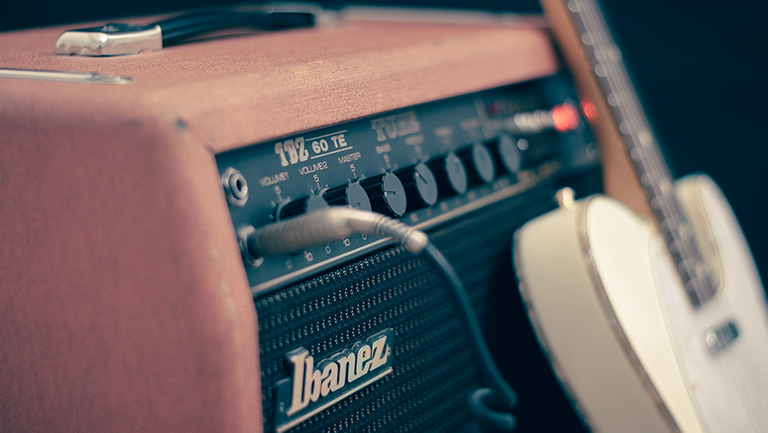Guitar amps are one of the most prized possessions of guitarists, and just like guitar players like to own many guitars, many people like to own a variety of guitar amps. Even with the introduction of pocket-sized amps and DI-boxes, the good old guitar amps have stood the test of time and are still as popular as ever.
With so many options and variances, you might have come across a guitar amp with two inputs and wondered what it’s there for.
Most guitar amps with multiple inputs are meant for connecting with guitars having pickups of various signal strengths. Guitars with “hotter” pickups, such as some humbuckers and almost all with active electronics, usually play better with the second (sometimes marked “Hi”) input. Some effect pedals that output a hotter signal may also hook up better with the second input.
Having said that, music has no boundaries, and almost no rules are set in stone. For example, a guitar with a hotter signal might be better suited with the second input for someone trying to play clean but another musician might use this inherent difference to their advantage. As you will learn later in this article, the mismatched impedance may overdrive the preamp which can produce some nice gritty tones that a rock/metal musician might exploit.
Why Do Some Amps Have Two Inputs?
Different guitars have different types of pickups, including single-coils and humbuckers, active and passive. These different pickups produce a slightly different signal strength, especially those guitars with active electronics. This higher output or “hotter” signal can usually unintentionally overdrive the preamp, and to prevent and accommodate the variance in signal level/strength, some amps have two inputs.
The first input goes straight to the amps preamp section and is meant for passive guitars that output a low impedance (more on that later) signal. The second input is padded by a resistor to decrease the signal strength (usually by 6dB) and to match the higher impedance of hotter pickups usually found in active guitars.
Playing a guitar with hot pickups through the unpadded, low-impedance input might overdrive/saturate the preamp. To keep the output clean you’ll need to use input #2 (-6db). Some people may intentionally use input #1 with hot pickups if they’re looking to overdrive the amp and produce a more natural distortion effect.
“Hi” and “Lo” Inputs – What Do They Mean?
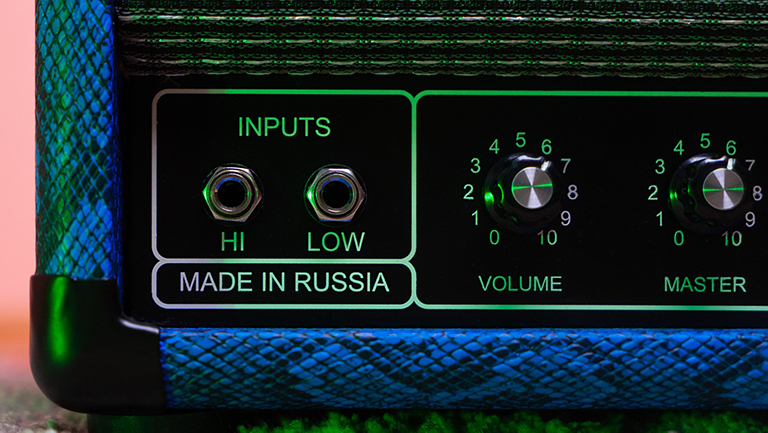
Some amp manufacturers mark the two inputs as “Hi” and “Lo” which adds to the confusion as many people think it’s meant for High/Low outputs respectively, which isn’t the case. While playing a guitar through the two inputs may produce a higher/lower loudness at the same volume level, the “Hi” and “Lo” actually refer to the High/Low Impedance.
Impedance matching is required to produce an optimal sound quality and tone, which is why the two inputs could be very useful if you play a varied range of guitars with different output levels/pickups.
What Is Impedance and How Does It Affect the Tone?
Electrical impedance in terms of guitar and amps is the opposition or resistance of a change in signal level through the amps’ circuit. While the actual definition is much more complex, for our needs we can simplify it by saying a lower impedance input has less resistance inside the amp, while the high impedance one usually goes through a 1 milliohm resistance to the preamp resulting in a lower (but similar) final signal strength.
If you hook up a guitar with hot pickups to the low impedance input the signal strength reaching the preamp section is much higher and therefore might start clipping. This preamp output goes into the power amp section which in turn drives the speaker(s) to produce sound.
Therefore, the two inputs on the amp may have a slight difference in the tone (depending on whether the signal clips), but the most apparent difference is usually the volume level.
Different Types of Amps with Multiple Inputs
Let’s now discuss the various input-jack arrangements different amps may have. Amps with “Input 1 & 2” markings are common and can be found on many Fender amps. Vintage Lab Series amps usually have inputs marked with “Hi” and “Lo”.
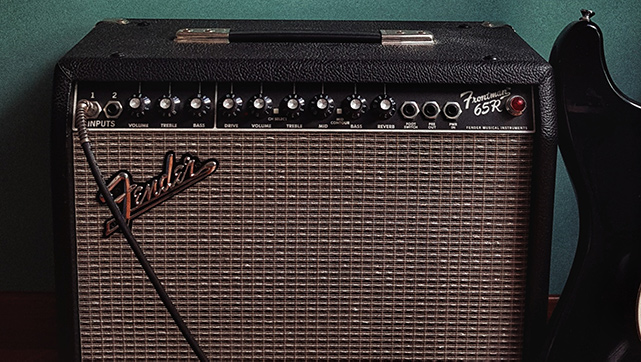
Amps with Inputs 1 and 2/Hi and Lo
The different markings/naming you would find on amps with high and low sensitivity inputs are:
- Inputs 1 and 2
- Hi and Lo
- High and Low (usually along with “Sensitivity”)
- Passive and Active
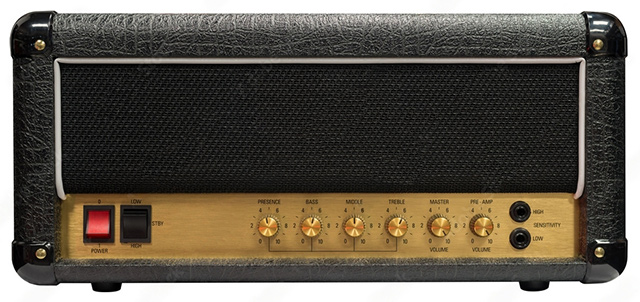
In all these cases, the second input is padded with -6dB and is meant for playing guitars with hotter pickups or active electronics. What adds to the confusion is that some amps with multi-channel inputs (meant for playing multi instruments with one amp) may also have inputs marked with 1 and 2. The major difference is that they also have volume knobs for each input (and are marked clearly) which is a tell-tale sign that the inputs are for different channels.
Amps with Multiple Channels
Some amps (usually keyboard or keyboard+guitar amps) have multi inputs meant for playing different instruments through a single amp. These types of amps will usually mention the multiple channels prominently and will have Volume knobs for each one. Donner, Peavy, and Roland multi-channel amps have multi inputs, and some of them even have separate inputs for a microphone (for vocals).
Some of the older amps also used to have multiple input jacks for the different band members to plug their instruments into. Back in the day, not everyone had access to amps, and small bands usually played through a single amp.
Amps with Input Padding Switch
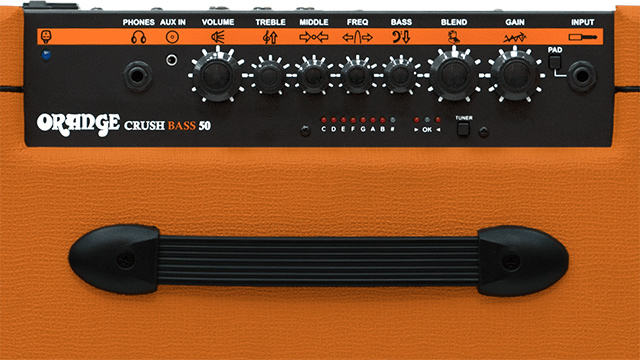
A few amps like Orange Crush have a single input along with a switch marked “Pad” which, when activated, pads the signal by -6dB. You can use the same input for both active and passive guitars, and just have to press the “Pad” switch for active guitars or if the signal from your guitar is cracking up/overdriving the amp.
Can I Plug Two Guitars to These Amps?
Technically, you can plug and play two guitars at once and play them through a single amp. However, doing this is not a good idea as this could lead to overloading of the preamp, which could burn out the amp. Also, playing two guitars could result in them phasing each other out, which, in simple terms, means an overall poor tone.
Therefore, unless you have a multi-input amp, it wouldn’t be a good idea to use the two inputs to play two guitars. Phasing-out might still be a minor issue as these amps are meant for playing different types of instruments but the amp itself will probably be safe.
Which of the Inputs Do I Use?
The choice of which input to use would mostly depend on your preferences which you’ll find after some trial and error. Hooking up any guitar to either of the inputs won’t damage the guitar or the amp so you’re free to do some tests. However, as a general guideline, you would want to use the second input for playing guitar with hotter outputs if you’re playing mostly clean. Again, plugging a higher signal-strength guitar won’t damage the amp but might result in the tone breaking or cracking up, especially at higher gains/volume.
Active Guitar
If you’re trying to play clean, you might want to use the second (padded) input. If you want a more overdriven tone, you can try Input #1 which might naturally overdrive the preamp better in most cases.
Humbucker Pickups
You can try both the inputs and see what you prefer. Some hotter humbuckers might play better with the padded input.
Effect Pedals
Some pedals output a boosted signal which would be better played through the second input while others output a normal signal. You might want to experiment by hooking up to each of the inputs and hearing the difference.
If the sound has a much lower volume or is kind of muffled, you might want to use the unpadded input (or Input #1). If you get some tone breakup, especially at slightly higher volumes (and it is undesirable), you might be better off with Input #2 (Hi)
Should I Buy an Amp with Two Inputs?
An amp with two inputs could be important for someone who plays a wide array of guitars including an active guitar. While different passive guitars have varying levels of signal output, an amp that only has a single input can easily handle that. Some people like using the padded input for guitars with humbucking pickups, but I don’t personally think that is necessary.
Many mid-sized (power-wise) guitar amps come with two inputs (or another way to pad the input). So, you can always choose one with such a feature if you’re buying one. However, there is no reason to go out and buy a new amp with two inputs just for the sake of it unless you’re already looking to upgrade.
Conclusion
Guitar amps with two inputs are meant for use with guitars of different signal strengths. The different impedances of the various pickups found in guitars sound best when matched to the amp. The Lo/Low/Input 1 is useful for hooking up your passive guitars while the Hi/High/Input 2 will often sound better if your guitar has active, humbucker, or hot pickups.

